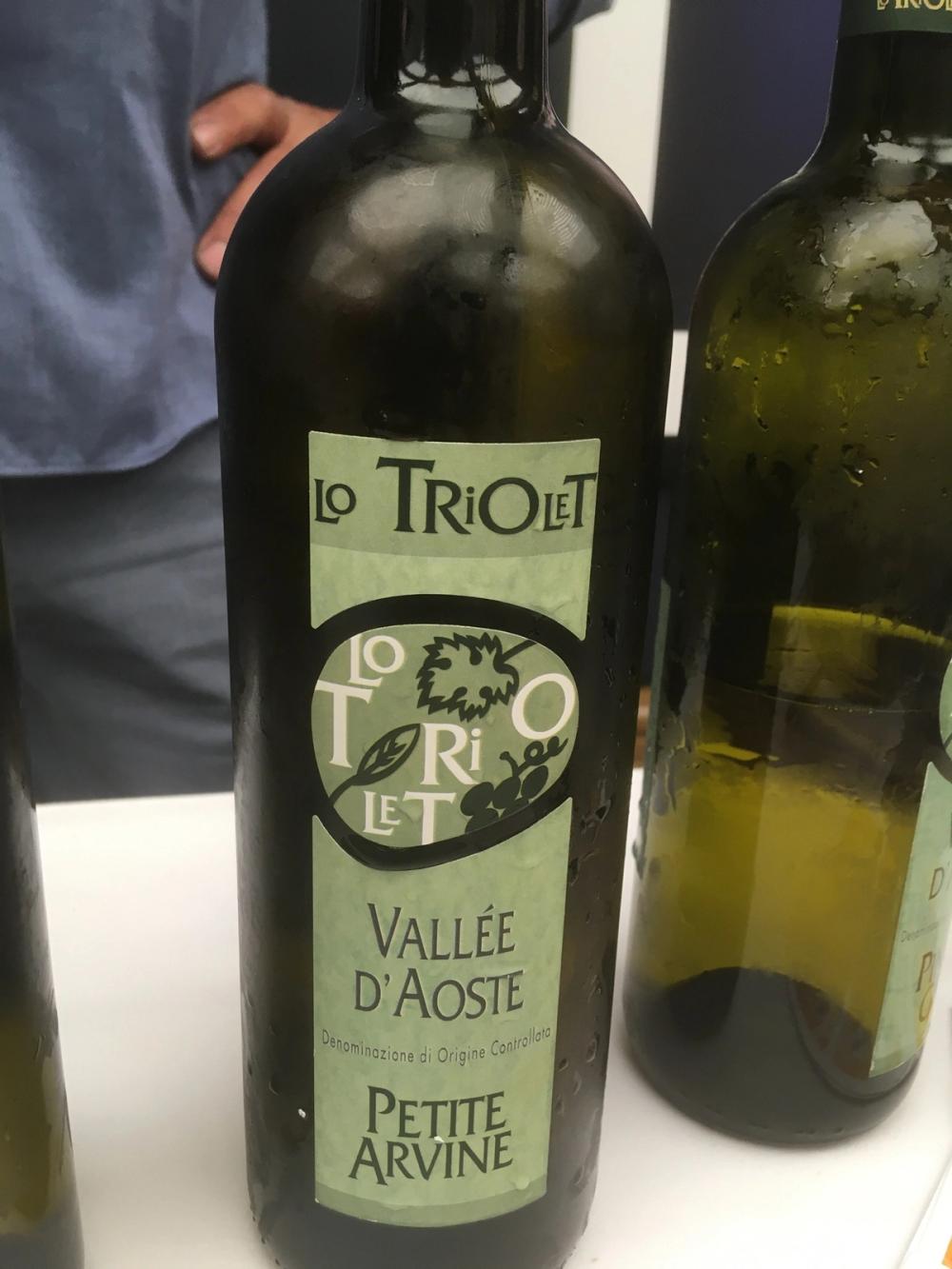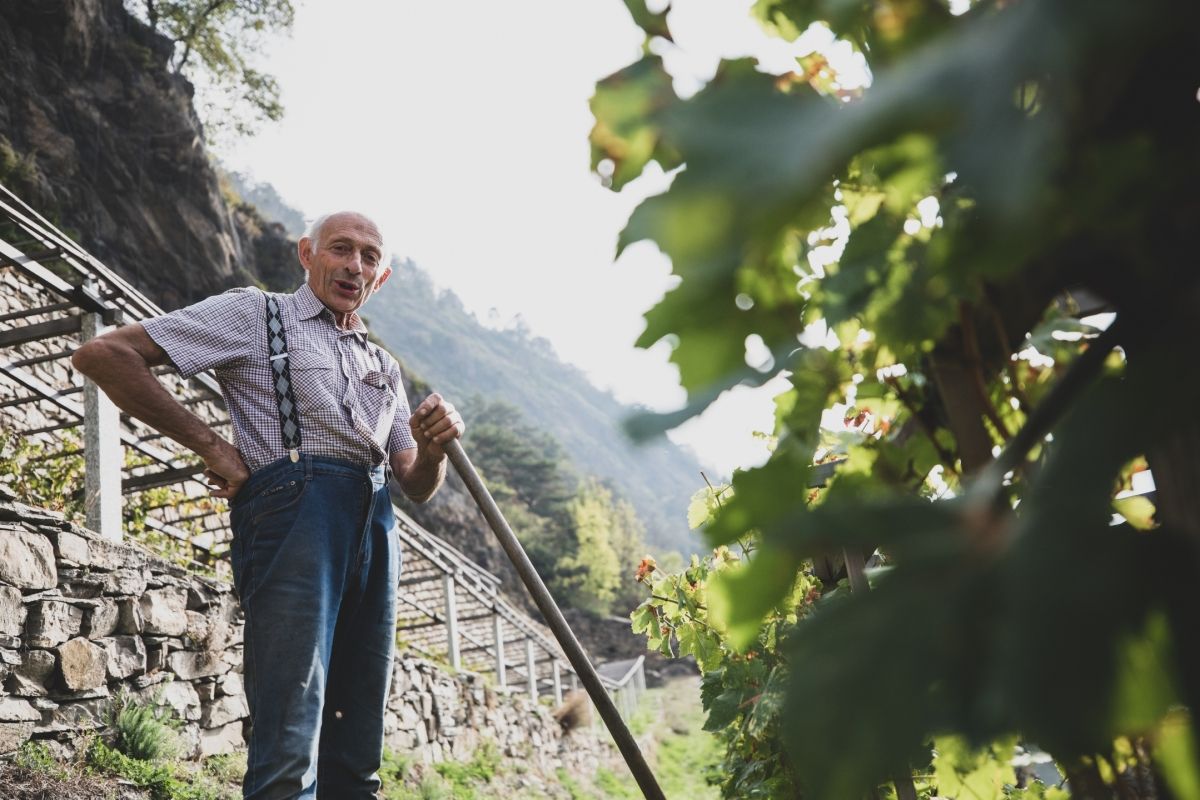“This was a great introduction to a fascinating region with some unique and delicious wines. Roll on the next Valle d’Aosta wine tasting, hopefully with more, equally eclectic producers,” writes Keay

Valle d’Aosta wine comes from the highest elevated vineyards in Europe
Barely a week in the UK wine trade passes by without some sort of Italian wine tasting, proof of that country’s vast and ever increasing oenological wealth. Recently we’ve had generic tastings (Wines of Sicily, Chianti Classico), tastings focused on AOCs and grape varieties (Gavi, Verdicchio, Sangiovese) alongside myriad importer events, including Liberty Wines’ always impressive Piemonte tasting. Not that I’m complaining – far from it. But unless I missed it, there’s never been an event devoted to Valle d’Aosta wine, tucked up against France, the Alps and, most famously, Mont Blanc in Italy’s northwest corner – until now.
“The region has shown it can do local and international varieties very well and really deserves to be better known. There’s a story to be told here and it’s a fascinating one,” says Simon Hardy, a wine expert who has spent the last several years successfully representing Swiss wines in the UK.
Hardy has just launched a new website resource Alpina Vina widening his remit from Swiss Wines (Valais, Ticino, Graubunden and Chablais) to include other Alpine wine regions including Savoie in France and Alto Adige, Valtelina and the Aosta Valley in Italy. The idea is to spread the word about these region’s varieties, viticulture and producers with travel tips etc available for those who want to explore for themselves.
“All of these regions make great wines from varieties that are really not that well known in the trade, with producers who are learning and getting better all the time,” he says.
So what of Valle D’Aosta?

Valle d’Aosta is a wine region that never experienced phylloxera
Covering just 3263 square kilometres with a population of around 126,000, Italy’s smallest wine region – Italian and French are the official languages here – produces typically just 1.5m bottles a year – a drop in the ocean by Italian standards. Cooperatives (as in Trentino-Alto Adige, all very good with some cutting edge) account for some 75% of that. Two thirds of production is red/rosé wine (local varieties include the widely planted Petit Rouge, Cornalin, Fumin and Nebbiolo) whilst sparkling/white account for the rest (Prie Blanc is the only white autochthonous variety). International varieties including Pinot Noir, Pinot Gris, Chardonnay and Syrah are grown, alongside Swiss varieties – notably Petite Arvine – and Germany’s Müller-Thurgau. There’s one DOC, Vallee d’Aoste, seven sub-zones.
With cultivation very much of the heroic kind, on steep slopes with terraces and pergolas in an area which never experienced phylloxera, yields are low. But although wine has been made in this region for generations, production went into decline in the early to mid 20th century only coming back with the help of the church: after the devastation wrought by the war Canon Joseph Vaudan spearheaded the revival of commercial winemaking, helping bring in many of the aforementioned varieties.
So how were the Aosta wines?
Held at 67 Pall Mall, this was a small but perfectly formed tasting with six producers present (of whom four have a UK importer) and around 30 wines, all with some merit.

First off, Cave Mont Blanc, a cooperative of 18 growers established 40 years ago in Morgex La Salle close to the base of Mont Blanc. Total volume is 130,000. With grapes grown at 900-1200m, working almost entirely with Prie Blanc, an autochthonous variety of which just 25 hectares are grown, the focus is on organic wines with no intervention. Amongst a range that also showed an interesting still version of Prie Blanc – Rayon 2020 – and a delicious classic method Blanc du Blanc 2019 (12%) with great freshness and fine acidity and richness reflecting 2 years of lees ageing, the absolute star here is the Cuvée des Guides 2018 (12%) incredibly rich and intense and showing great complexity. The wine undergoes second fermentation and ageing at 2200m, actually on Mont Blanc. Impressive and worthwhile stuff. (Les Caves de Pyrene).

Next up, Azienda Vitivinicola Lo Triolet, winner of several Tri Biccieri awards with two Pinot Gris, a Pinot Noir, a Torette (a blend of 90% Petit Rouge, 10% Fumin) and a nice Fumin 2020, very dark coloured wine with great texture, red fruit dominant and good length. My choice here would be the Petite Arvine 2020 (13.5%) very well made, with good balance and a purity supported by fermentation in stainless steel. Very nice and fruit forward. (Imported by Mondial Wines)

Established 15 years ago, producing just 60,000 bottles, Ottin Vini is sustainable winery makes a delicious Fumin 2021 and two very decent Pinot Noirs, especially L’Americo 2019 aged in oak barriques for 18 months and then another 12 in bottle. But the standouts here are the moreish Petite Arvine 2021 – delicious and fresh having aged on fine lees in stainless steel for 8 months – and my star Ottin wine, Nuances 2020 (14.5%), very rich, with lees ageing in big barrels for 12 months before another 12 months in bottle. The oak is just discernible, forming a warm backdrop for the rich, fruity, very textured palate. Lovely (Flint Wines).

The gong goes to… Fumin barrel-aged for 12 months.
Daniele Cernilli’s Essential Guide to Italian Wines says Les Cretes is one of Italy’s top wine producers and given the quality of what was shown, I’m not going to argue. I found the award winning Valle d’Aosta Chardonnay Cuvee Bois 2021 a bit too oaky, but age-worthy so in time the fruit will gain more complexity. I liked the Rose 2022 – made from 100% Petit Rouge and aged on the lees for 2 months – quite pretty and fruit-driven but here the gong goes to the Fumin 2021 (13.5%) barrel aged for 12 months and in bottle for 6 before release; this is wonderfully dark and saline with lots of red fruit flavours and a surprisingly long finish. (WoodWinters).

Giorgio Anselmet showed some of the wines of the tasting – and is still seeking UK representation
Quite how Maison Anselmet and its sister winery La Plantze do not have a UK importer is a mystery because the first of these in particular showed wines that were the star of the show – and not just for me, judging by the gaggle of people at the stand throughout the tasting. Both these wineries are owned by the Anselmet Family, which can date its winemaking traditions in the Aosta region back to 1585 and who today make wines (in small volume, 80,000 and 20,000 bottles respectively) experimentally, on old ungrafted vines.Giorgio Anselmet
I really liked Maison Anselmet’s Chardonnay eleve en fut de chene 2021 (14%) oak-fermented for 18 months but with the oak just right, allowing the fruit from the 30-year-old vineyard to shine with vanilla notes supporting tropical fruit and quince on the palate. La Plantze’s Vin Blanc Feroz 2021 (13.5%) was fresh and appealing, with a distinctive struck match character, whilst the Syrah L’Avener 2021 (13%) was very appealing, medium bodied and textured with forest fruit on the nose and palate.
However, the star was Maison Anselmet’s extraordinary, complex, rich and nuanced Le Prisonnier 2021 (15%) which certainly captured me with its sheer audacity. Made with partially dried grapes grown on 104 year old vines in a vineyard whose location can be traced back to Roman times, this ambitious autochthonous blend of Petite Rouge (40%), Cornalin (30%), Fumin (20%) and Mayolet (10%) fermented in stainless steel before being aged in oak for 18 months had wonderful balance, complexity and richness. But sadly only 2000 bottles made, so tiny volume even by Aosta standards. What I would call one of those “you really had to be there wines.”
And actually, you really did have to be there. This was a great introduction to a fascinating region with some unique and delicious wines. Roll on the next Aosta tasting, hopefully with more, equally eclectic producers.









































